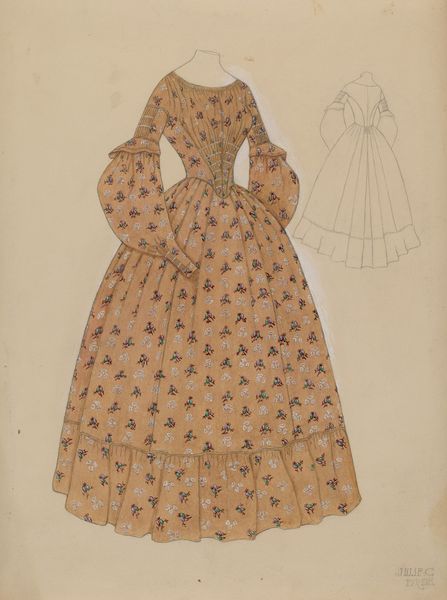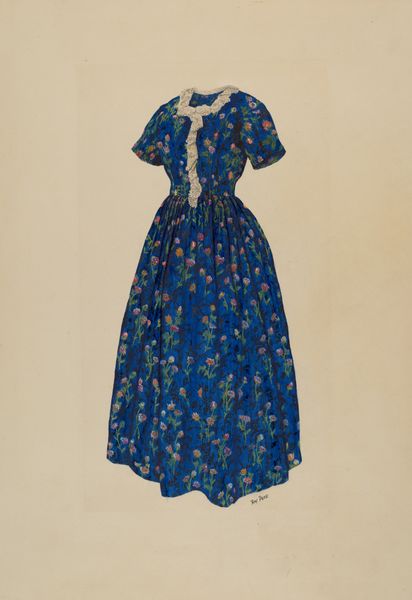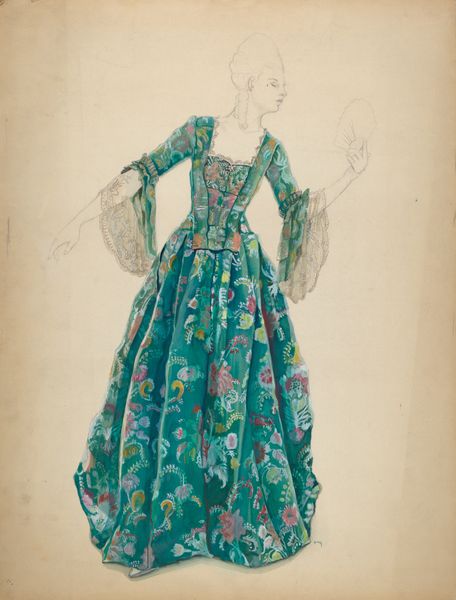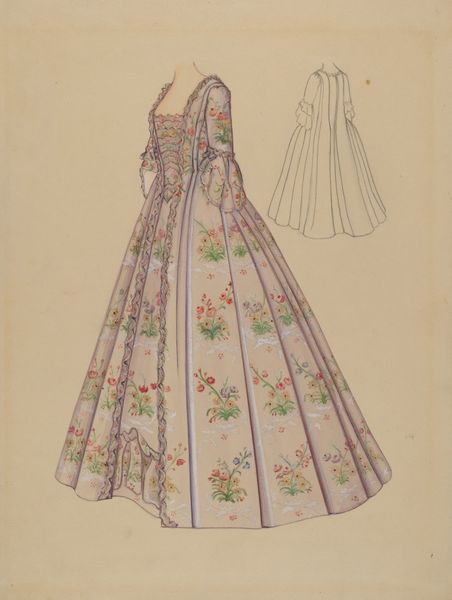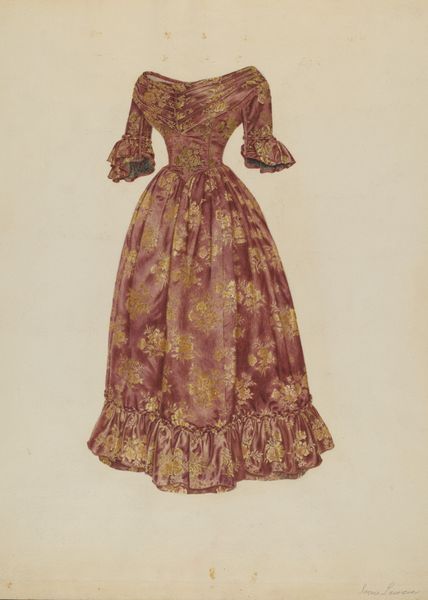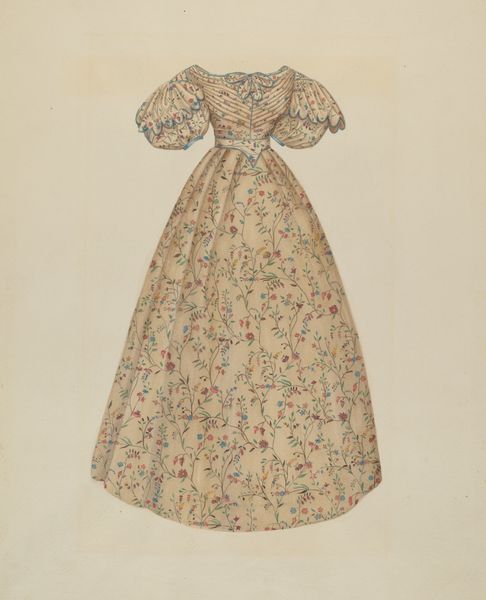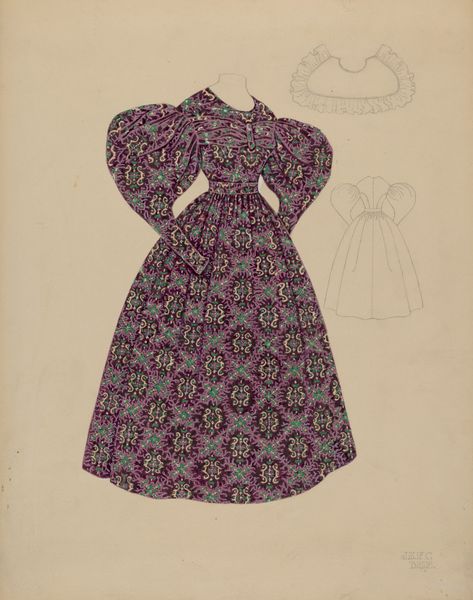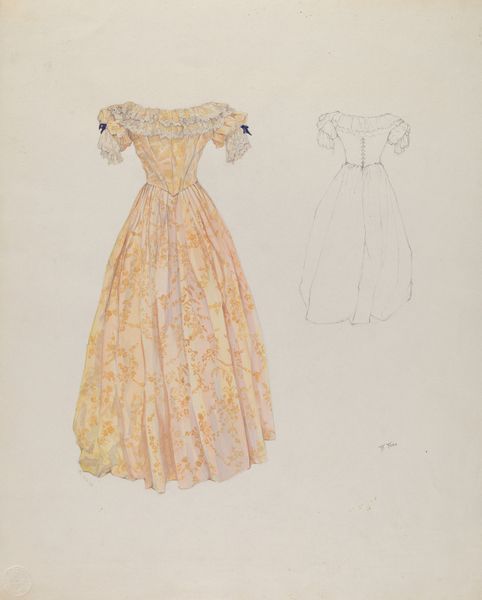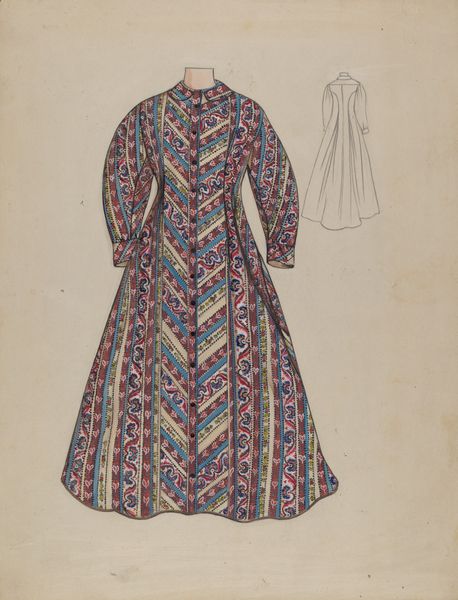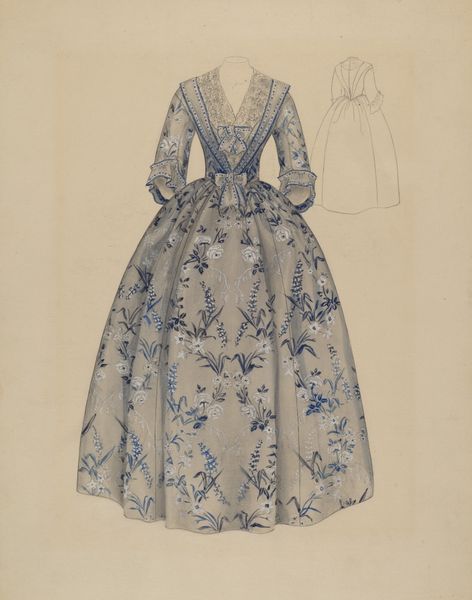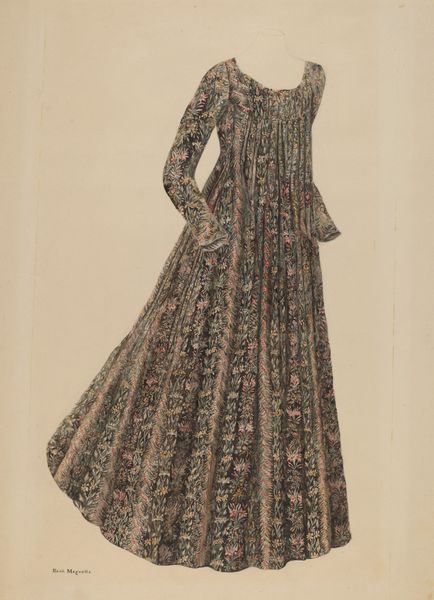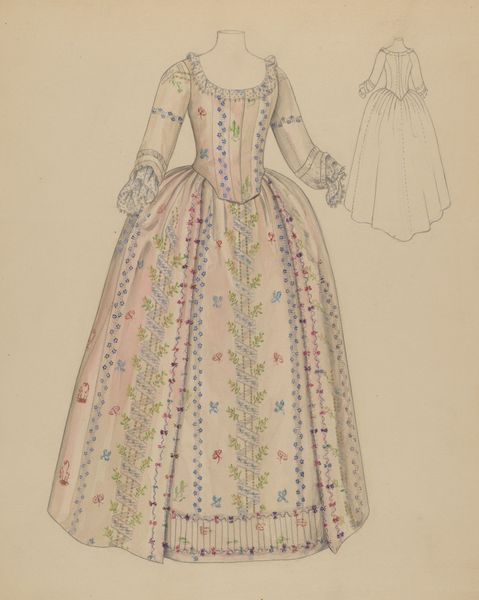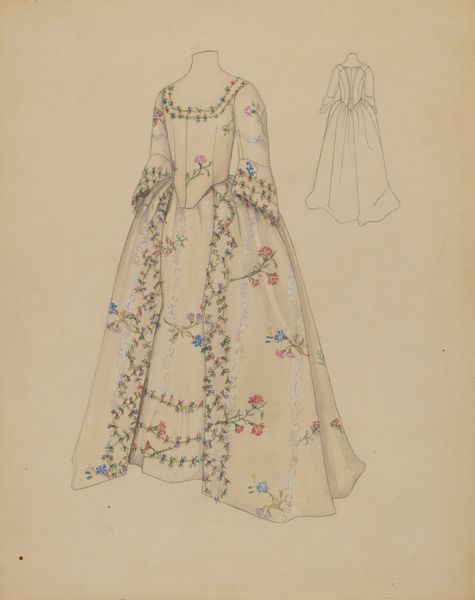
Dimensions: overall: 30.5 x 23.2 cm (12 x 9 1/8 in.)
Copyright: National Gallery of Art: CC0 1.0
Curator: Oh, how utterly charming! It's so evocative. The instant I look at this piece, I'm transported—maybe to a prairie dance, a quilting bee. I wonder about the woman who might have worn this... what secrets are sewn into its seams? Editor: Quite right, there is indeed an arresting romanticism. We are currently looking at "Dress," a mixed-media work on paper and textile dating back to approximately 1935, conceived by Julie C. Brush. Technically speaking, it's fascinating—acrylic paint layered with collage elements and a strong impressionistic influence is present. The formal concerns are definitely at the forefront. Curator: I see what you mean. Brush captures more than just the frock; she captures a feeling, an essence, a story whispered by time. I feel the longing for simplicity and beauty woven together with a nostalgic warmth. But tell me more about those layers...do they obscure or illuminate, in your view? Editor: Both, in a way. Observe how the repeated geometric motifs create a textured field across the fabric of the dress, contrasted with the smoother expanses. This interplay generates visual interest but also complicates the representation—pushing us towards an interpretation less about literal appearance, more about design, and even abstraction. The layering effects become crucial semantic components. Curator: It makes me wonder about her creative process. Did she meticulously plan each fold and flourish, or did the dress evolve organically, like a garden blooming in unexpected ways? This "ethnic design" aspect speaks volumes to how different aesthetics mingle effortlessly. It makes the "fashion sketch" more universal somehow. It seems like it must have been an intuitive experience more so than something overly engineered. I’m definitely feeling an understated confidence, quiet strength, a feminine quality…a woman secure and self-contained. Editor: I can appreciate the intuition you draw from it, although such an interpretation leans towards biographical projection. The beauty of formal analysis is that it remains within the empirical, focusing on internal relations. The composition, for example—how the flat, decorative swatch in the upper-left subtly echoes the overall dress pattern, reinforces a system of echoes within the artwork. A study in textile semiotics and layering, definitely. Curator: Right, a dialogue between echoes – just as dialogues happen through our voices about the very same subject! In truth, beyond the materials or the methods, the art really resides in the quiet places. I cherish a connection with these quiet places above everything. Editor: Well, it has been highly intriguing seeing how your more sentimental lens has engaged with my objective evaluation here. "Dress" seems to spark diverse interpretations, doesn't it? And perhaps in these contrasting viewpoints, its multifaceted charm reveals itself anew.
Comments
No comments
Be the first to comment and join the conversation on the ultimate creative platform.
